February 14, 2012
http://creativecommons.org/licenses/by-nc-sa/2.0/deed.en
Talking About Health; Why Health Communication Matters
A BLOG to support my book, Talking About Health; Why Health Communication Matters
January 12, 2012
Shortly before the holidays, I heard Dr. Oz talking about coffee. He played a game with audience members and emphasized that coarsely ground, light roast coffee made with cold water and NEVER microwaved is best when aiming for the benefits of coffee. Benefits? I thought. Isn’t it interesting how different stories emphasize different results?
On the hunt for the science I went. In 2009, a study reported that 3-5 cups of coffee a day related to a reduced risk –65% less — for dementia and Alzheimer’s disease [http://iospress.metapress.com/content/d885346618q57103/].
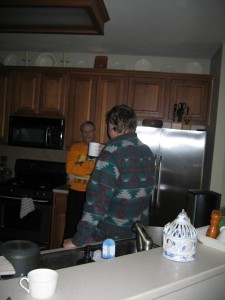 I was reminded of my discussion in my book, Talking about health, about old science, new science, conflicting science, and no science. I went online in search of some more science to discuss the coffee and caffeine health benefits. I found the Dr. Oz story: http://www.drozfans.com/dr-ozs-advice/dr-oz-american-roast-coffee-prevents-colon-cancer-coffee-trivia/
I was reminded of my discussion in my book, Talking about health, about old science, new science, conflicting science, and no science. I went online in search of some more science to discuss the coffee and caffeine health benefits. I found the Dr. Oz story: http://www.drozfans.com/dr-ozs-advice/dr-oz-american-roast-coffee-prevents-colon-cancer-coffee-trivia/
An article in 1990 reports findings that the participants who reported drinking more coffee had a higher incidence of colon cancer [http://www.jstor.org/pss/20065645].
A study reported in 1993 found no relationship between more than 34,000 women’s reports of caffeine consumption and breast cancer [http://aje.oxfordjournals.org/content/138/6/380.short].
In 2007, a study found that 2 cups of black tea or decaf. coffee each day related to reduced risk for ovarian cancer, but regular coffee did not show this relationship. Again, women self-reported their behaviors [ http://onlinelibrary.wiley.com/doi/10.1111/j.1525-1438.2006.00773.x/full].
Also in 2007, a study found that drinking 2 cups a day of regular coffee greatly reduced — 43% — risk for liver cancer [http://www.gastrojournal.org/article/S0016-5085(07)00568-9/abstract].
What does it all mean? Talking about health means thinking about when a study was conducted, who particpated, and how the research was done. Self-reports are different from clinical studies. I don’t know of any clinical trials where participants are given coffee over time and compared to participants who do not consume coffee. So the research depends on individuals reporting how much coffee they drink. And then clinical reports about their health status provide a picture of what might be making a difference in the health of some compared to others. So when talking about health, don’t lose sight of the meaning of shorthand expressions like, ‘drinking 2 cups of coffee a day reduces your risk for cancer’…
December 11, 2011
Not long ago, near the end of September, I reflected on the debate that took place between Dr. Besser and Dr. Oz about apple juice. It was a chance to consider the meaning of evidence when reports appear about the safety of food or other substances. I noted that I would have appreciated it if Dr. Besser had spent more time talking about why the evidence was of poor quality and less time attacking Dr. Oz.
Well, new data is in. Dr. Besser apologized to Dr. Oz and aimed his criticism at the FDA where data about arsenic in applie juice had been piling up for a number of years. A new study released by Consumer Reports added to that data. Dr. Oz gives tips about the amount of apple juice that should be safe for children at different ages to drink. It is clear that all of us need to keep asking for answers to the question: how did the science reach that conclusion? When we ask, someone just might listen and try to give a more valid answer…
November 29, 2011
I cannot say where I heard this recently. Something in the background while I was working at my computer. But it stuck in my brain. It was a report indicating that research had shown that taking a cold shower could improve mood. It didn’t say what research. Nothing new there…
I began to think about all the camping trips when showers were unavailable but a cold lake or river was nearby and provided a bathing experience. I thought about jumping into swimming pools with cold water. And I remembered camping facilities where the showers offered only cold water. Funny. As I thought about it, in every case I was in a better mood coming out than going in. I thought it was because I got the day’s sweat and dirt off me or had a nice workout swimming, but maybe not.
Since this stayed with me over the past several weeks while I have been buried under papers and research and teaching, I decided to take a break and look up the research. I found a journal that presented a research question and rationale in 2008: http://www.sciencedirect.com/science/article/pii/S030698770700566X The researchers argue for a study to systematically consider the possible relationship. I cannot find where such a study has been conducted. If you find it, let me know… Inquiring minds want to know.
In the meantime, here is something beautiful to behold:
September 21, 2011
All has been quiet on the talking about health front. I am in the midst of teaching the undergraduate class about designing health messages at Penn State, so it is odd that I don’t find my way here more often. But in the fury of the debate over the Dr. Oz show about apple juice. [go here to read and listen to the debate if you want more information: http://www.doctoroz.com/videos/arsenic-apple-juice], I had to make time to add a few thoughts.
First, in favor of Dr. Oz — his show entertains us and informs us at the same time. We do have to remember that someone has to pay the bills for the show, so the entertainment quality has to be there. It is that simple.
The positive things about a show like Dr. Oz is that it can arouse public passions about scientific issues and lead to health advocacy. It may increase healthy behaviors and improve our vocabulary when it comes to talking about health and the science of health.
But on the negative side–it can be confusing and contribute to inaccurate understanding. It may arouse public passions but these can be misdirected.
The apple juice show and related debate illustrates both. The headline for the page above and the text beneath illustrates this reality. What is an “extensive national study”? According to the text, it means “dozens of samples” from “three different cities”. That is neither extensive nor a nationally representative sample.
How was the study conducted? Even with the several dozen samples, there is much room for the approach to vary. Did the tester shake the apple juice before drawing a sample? That might be important in terms of how the contents in the apple juice are distributed through the liquid. Did the tester take a sample from the bottom of the juice container or the top? Did the tester take more than a single sample of juice from each of the containers tested? Inquiring minds want to know…
But instead of focusing on specific and direct questions to guide our understanding, the backlash focused on name-calling. Skimming the contents of various letters from companies represented on the show and the Food & Drug Administration–FDA–“irresponsible” might be the most frequently leveled charge. Dr. Besser calls the Dr. Oz show “fear-mongering”. Watch this exchange:
I give credit to Dr. Oz for remaining calm and answering the charges.
But I wanted to know more about organic and inorganic arsenic levels, and other issues such as I raised above. I wanted to know less about Dr. Besser’s “upset”…
August 30, 2011
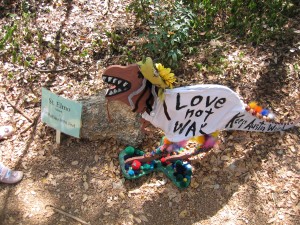 Access is everything. Access to health care. Access to education. Access to employment. Access to role models who walk the walk and talk the talk.
Access is everything. Access to health care. Access to education. Access to employment. Access to role models who walk the walk and talk the talk.
One of the followers on this blog brought the New York Times article, ‘Preaching a healthy diet in the deep-fried delta’, to my attention. You can find the article at http://www.nytimes.com/2011/08/22/us/22delta.html?pagewanted=all.
Why in the face of so many messages about diabetes, obesity, and heart disease would anyone continue to eat fried foods? Because it tastes good. And because we socialize and have fellowship with family and friends over meals that feature these foods. But Reverend Michael Minor and other church leaders have been working to change all that.
‘No fry zones’ and fruit platters, fresh water and no soda… these are the new ‘normal’.
August 22, 2011
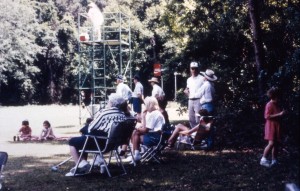 Perhaps you heard stories last week about a brain-eating amoeba and the use of Neti pots [http://www.wdsu.com/r/28921234/detail.html]. I heard a headline first about a young boy who died after being at a fishing camp and falling into water where he apparently had contact with the amoeba and it got into his body.
Perhaps you heard stories last week about a brain-eating amoeba and the use of Neti pots [http://www.wdsu.com/r/28921234/detail.html]. I heard a headline first about a young boy who died after being at a fishing camp and falling into water where he apparently had contact with the amoeba and it got into his body.
I heard about the Neti pot and exposure to the brain-eating amoeba from my husband who asked me to remind him to tell our daughter-in-law about it because she uses a Neti pot. And your sister, I added…
“What can you do about it?” I asked. My daughter-in-law suffers from allergies and sinus problems and the Neti pot provides relief. I didn’t want to just ‘scare’ her. After searching a few stories, I learned that you can use distilled water in the Neti pot to avoid any risk. [http://abclocal.go.com/wpvi/story?section=news/health&id=8314285] Of course, I had to read to the very last line to glean that advice…
How about this: Neti pot users can avoid risk from amoeba by using distilled water. Open the story this way or use this in a headline to state how to respond to the risk. Repeat it near the end to reinforce the response. But avoid telling a tale that arouses fear without a suggestion about how to reduce the risk near at hand…
Yes, it is hot… And the weather affects our health…physically and mentally.
So, what are we to do about it?
I loved the message Dr. Besser gave on ABC News with Diane Sawyer tonight… ‘put your sheets in the freezer a couple of hours before going to bed…’
This is an example of a ‘good’ message. It is specific. It is doable. It is affordable…we mostly have sheets on our beds. We mostly have refrigerators in our homes and these appliances have freezers.
So, I am doing it. I will let your know tomorrow…did it work? That, of course, is one of the most important parts of a good public health message…
June 4, 2011
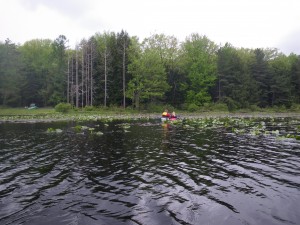 As a college professor, I get to bask in the reflected glory of graduating seniors each semester…especially every May. Until the past couple of years. Especially this year. This year, I hear the same story from students whether they were graduating with experience or not, an engineering degree or communication, and high grade point averages or just average. No jobs.
As a college professor, I get to bask in the reflected glory of graduating seniors each semester…especially every May. Until the past couple of years. Especially this year. This year, I hear the same story from students whether they were graduating with experience or not, an engineering degree or communication, and high grade point averages or just average. No jobs.
I feel their pain. I see it in their daily classroom attitudes. ‘Once upon a time’ is how they hear the refrain ‘go to college, study hard, and you’ll get a good job’… Maybe in the old days they say…
This in the same period of time as Oprah retiring and telling us all to live our best life… ‘Our best life?’ asks students whose parents sacrificed for them to go to college and may themselves be faced with unemployment or forced early retirements. How shall we define that life?
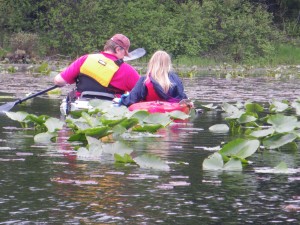 Of course, when there are no jobs, there is no health care insurance. When there are no jobs, there tends to be less healthy eating, as fresh foods cost more and fattening high calorie foods are…cheaper and often comforting in the face of disappointment. Higher rates of depression… So physical and mental health suffer.
Of course, when there are no jobs, there is no health care insurance. When there are no jobs, there tends to be less healthy eating, as fresh foods cost more and fattening high calorie foods are…cheaper and often comforting in the face of disappointment. Higher rates of depression… So physical and mental health suffer.
And then last night I watched the ABC show, ‘Shark Tank’…wow! Inspirational, motivating… The person seeking money for his idea had invented a filter paper in the form of a “nose contact”–not his words exactly, but mine to help you visualize what it looked like if you don’t have time to go to the show’s online site and watch an excerpt. He did say that to insert the filter paper into your nose, you place it on your finger like putting in a contact…which seemed to be understood by all of the ‘sharks’–the panel with money to invest if they see profit potential in an idea.
At any rate, the paper is designed to filter out viruses and air pollutants. The person seeking money for his idea had a signed contract with another country for 8 million dollars and needed 500 thousand to produce enough product to fill the order. Well, to make a great story short, most of the panel wanted in… One even offered to buy the company for 4 million dollars and give the inventor a royalty. As discussion unfolded, two of the sharks teamed up with an offer, another shark made a separate offer, and then–they asked for a time-out and the contestant left the room. The latter three teamed up with a combined offer.
In the end, the contestant accepted it and did not sell his company. He now has 750 thousand in cash and three partners in his company…three partners with proven success in bringing innovations to huge distributions. This is an idea that is smart, solves a problem that is much bigger in many parts of the world than it is currently in the U.S., requires manufacturing–i.e. jobs…
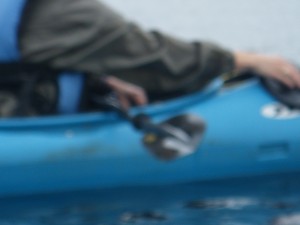 Perhaps this is a path of living our best life in the 21st century…solving persistent problems with simple solutions.
Perhaps this is a path of living our best life in the 21st century…solving persistent problems with simple solutions.
I am going to keep a diary of the ‘problems’ or ‘challenges’ I face each day this coming week for which I have no solution but have experienced before. I will add to it notes about my own observation of media reports that suggest others’ problems. I will listen for insights about these matters in conversations.
Perhaps you would join me in this venture. Let me know what you come up with and let’s get a conversation going about these matters…
March 22, 2011
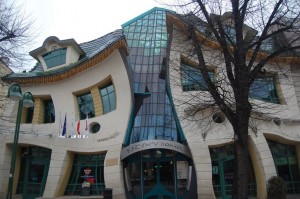 When we are traumatized by someone else’s trauma, we may experience compassion fatigue. While I discussed this in an earlier post in terms of vacations and leisure http://whyhealthcommunication.com/whc_blog/wp-admin/post.php?post=628], it is worth talking about in terms of so many images and messages relating to Japan’s earthquake[s], tsunami[s], and nuclear power threats… I daresay that anyone who has watched the news over the past week is experiencing compassion fatigue. How could we not be? The images are heartbreaking, frightening, and constant…
When we are traumatized by someone else’s trauma, we may experience compassion fatigue. While I discussed this in an earlier post in terms of vacations and leisure http://whyhealthcommunication.com/whc_blog/wp-admin/post.php?post=628], it is worth talking about in terms of so many images and messages relating to Japan’s earthquake[s], tsunami[s], and nuclear power threats… I daresay that anyone who has watched the news over the past week is experiencing compassion fatigue. How could we not be? The images are heartbreaking, frightening, and constant…
Susan Mieller, author of the book–Compassion Fatigue–[interview about the book at http://web.mit.edu/cms/reconstructions/interpretations /compassion.html] emphasizes the role of media in creating this condition. We have to focus on what we can do and not what we cannot do. We cannot go backwards and second guess decisions about how nuclear power plants in Japan have been maintained. We can do what we can do to help the Japanese people…even if it means watching ‘American Idol’ for a bit of distraction and downloading some music. We can try to understand the role of nuclear power in providing energy in the U.S. and seek direct answers about how the existing plants have been maintained…